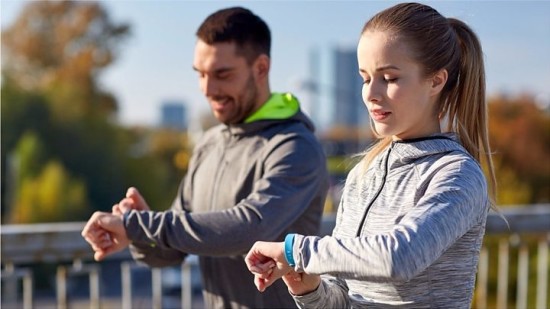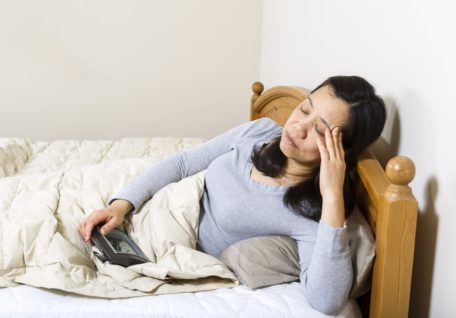Walking as an exercise often goes underrated. Many people think that it’s not intense enough to bring about results, but as we explain here, there are many benefits associated to getting out and about on your feet.
Firstly, walking is low-impact, so you won’t experience the same muscle fatigue and soreness as you would with other forms of exercise such as running, cycling, weights and high-intensity training.
The best part is, you’re in control. You choose the pace, the distance and the environment, all of which will bring about different experiences. Plus, you don’t even need any equipment, unless you want to carry around weights or a backpack for some added strength training.
Ultimately, there are very few risks associated to walking, especially when it comes to your body, and it’s often the first type of exercise you should attempt when trying to lose weight or get fit.
According to a recent study by the Victorian Government, “just 30 minutes of walking per day can alleviate a range of health concerns and costs associated with inactivity, obesity and chronic disease.”
5 Health Benefits:
- Improve Your Cardiovascular System:
Walking goes a long way to preventing several conditions, most notably heart disease, high blood pressure, high cholesterol and type 2 diabetes. It has also been linked to a reduced risk of having a stroke. Most importantly, it will generally improve the functions of the heart and lungs.
- Strengthen Leg Muscles:
You’ll definitely feel the burn in your quads, hamstrings and calves – and for the most part, it’s a good thing. Admittedly, too much walking could lead to mild muscle fatigue, but it’s a great way to strengthen the muscle groups mentioned above. A nice additive is the core strength you’ll also build over time.
- Burn Calories:
The average person burns around 40 calories per 1,000 steps, which means you’d be able to burn 400 calories if you reach your daily goal of 10,000 steps, as we explain below. Depending on your body composition, diet and general level of activity, being in a calorie deficit (burning more than your intake) will help you slim your waistline.
- Ease Joint Pain:
In the process of walking, you can protect your knee and hip joints by strengthening the muscles around them, as mentioned above, and supporting lubrication in those areas. It can also help reduce pain for those suffering from arthritis and other joint issues.
- Stress Less:
Apart from all the physical effects, one of the most critical health benefits is that to your mental wellbeing. As we’ve highlighted in our previous blog post, walking (and exercise in general) can help boost your mood, as well as relieve symptoms related to anxiety and depression.
Daily Targets
The most common debate when discussing how far or long you should walk, is what is the ideal number of steps people should target on a daily basis? A CQ University Initiative known simply as 10,000 Steps presents the most popular opinion that “reaching 10,000 steps every day will help you maintain a healthy lifestyle.
There’s no need to complete all 10,000 in the one walk, it’s better if you break this up into 2 or 3 smaller walks throughout the day that will help you reach that overall target. And you should also factor in all the incidental exercise that you complete as well, as we discuss below.
To achieve long-term and sustained results through walking, it’s important to add variety and incremental increases to your exercises such as:
- Increasing your speed and distance each week.
- Walking up hills and mountains.
- Carrying weights or a backpack (to improve strength).
- Increase your goal to more than 10,000 steps.
Don’t underestimate the power of partnering up with a walking buddy too, whether it’s a family member, friend or someone from a local walking group. Not only will the social interaction add enjoyment to your exercise, but you’ll also be able to challenge each other to improve and reach new goals.
Incidental Exercise
Incidental exercise is when you inadvertently complete physical activity in the process of undertaking another action. The most common examples of this are walking to work, school or to the train station, or taking the stairs instead of the lift.
In a recent blog post, we also highlighted some of the more creative and unique opportunities to achieve incidental exercise:
- Get off public transport one stop earlier and walk to work or home.
- Walk (don’t drive) to the local shops.
- Walk the dog (or your neighbour’s dog).
- Ditch the remote, walk to the TV when you want to change the channel.
- Park further away from the shopping centre’s doors.
- Walk to your colleagues’ desk rather than email or phone.
Of course, there are many more examples of this, we’ve only highlighted a few. The key is to try and identify the opportunities in your daily lifestyle that will help you undertake a little more physical activity.
Track Your Movement
How do you know how many steps you’ve done? The key is to utilise technology to record it all for you. We used to have the old pedometers, which aren’t entirely obsolete now, we just have far more extensive and detailed tracking through the use of wearable devices and mobile apps.
Wearables Device:
All the big tech brands have things like smart watches and activity trackers that will not only count the number of steps, but also add give you detailed information around your pace, distance, location, and other insightful data.
Here are some of the best wearable devices in the market:
Mobile Apps:
Most of these devices above will connect to your smartphone and have a built-in app, or you can connect it to the dedicated app for that brand. There are also plenty of third-party apps out there that will connect to your device/smartphone, track your activity on a deeper level and help you reach your goals, including:
Walking provides you with an array of benefits, and doesn’t require all that much effort. Step one is getting off that couch! Once you’ve made the leap of faith, make sure that you set yourself a goal, track your activity so you can see if you’re hitting your targets and you’ll see the health benefits (both physical and mental) in no time!









